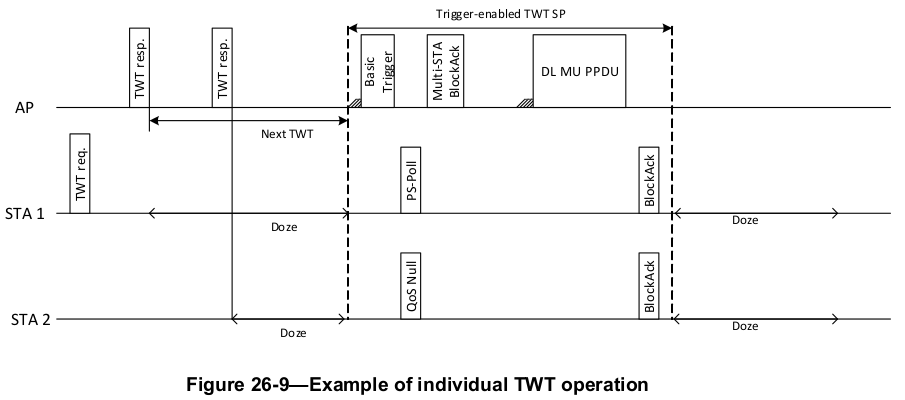In the earlier 802.11ah standard, a novel power save mechanism targeted to address power save requirements of IoT devices which normally would desire longer sleep times was devised. This method or feature was named as Target Wake Time.
In this feature, the Access Point could allow the 802.11 stations to wake up at predefined instances rather than wake up at DTIM beacon intervals and contend for channel as was previously done in the 802.11 standard. Since, each station is provided a specific time slice to wake up and operate, contention for the medium reduces leading to better channel utilization.
This feature has now been taken into the 802.11ax standard which defines two modes of TWT operation
- Individual TWT operation
- Broadcast TWT operation
The 802.11ax station which requests “Target Wake Time (TWT)” is termed the requester station and the 802.11ax station which responds to the Target Wake Time request is termed the responder station.
The below image illustrates how,
- A 802.11ax Station STA1 requests a TWT setup
- The Access point responds with a TWT response.
- The Access Point also sends an “unsolicited TWT response” to STA2 to setup a Trigger-enabled TWT Service Period (SP)
- During the service period, the Access Point sends a basic trigger frame
- The two stations respond to the trigger frame (one with PS-POLL and the other with 802.11 QoS NULL Frame)
- AP sends Down Link data and Stations send Blockack
- Stations go back to sleep

In the following articles, we will discuss how to enable TWT and the operation of TWT for Individual TWT and Broadcast TWT.
Pingback: PSR-based Spatial Reuse operation – MAC settings | Hitch Hiker's Guide to Learning